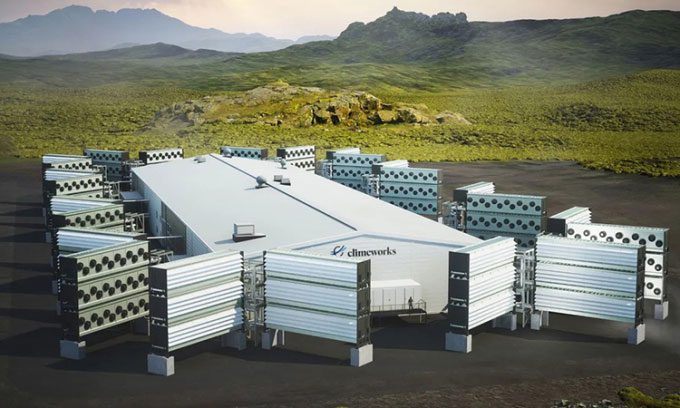Climeworks is the world’s first company to utilize direct air capture technology to extract CO2 from the atmosphere and permanently store it underground. They provide this service and require customers to pay to support the costs of the process.
According to a press release this week, Climeworks announced that it will begin offering carbon dioxide removal (CDR) services – certified by DNV, the largest certification body in the world – to its first three customers: Microsoft, Shopify, and Stripe.
“Providing CDR services to our first corporate clients is a proud milestone for us, achieved with rigorous third-party verification. Rapidly scaling operations is just one part of Climeworks’ mission. The other part is adhering to high standards, ensuring that customers can trust our CDR services,” emphasized Christoph Gebald, CEO and co-founder of Climeworks.

Design of Climeworks’ second CO2 collection and storage plant in Iceland. (Photo: Climeworks).
Climeworks has partnered with CarbFix to develop direct air capture and storage technology (DAC+S), where carbon dioxide is extracted from the atmosphere and dissolved in water before being pumped into underground basalt formations, where the mixture solidifies through natural processes in less than two years, rather than the hundreds to thousands of years typically required.
Climeworks did not disclose the costs associated with CO2 removal and storage for their first corporate clients, but these will be determined by the scale and duration that these corporations desire.
According to Interesting Engineering, the average cost for carbon removal is around several hundred USD per ton. Any organization can pay Climeworks to remove CO2 to offset their emissions.
Climeworks has currently raised over $780 million to scale up from various investors, including venture capitalist Jn Dooherr and insurance company Swiss Re. Last June, the company revealed that it is constructing a second facility in Iceland capable of capturing and storing 36,000 tons of CO2 annually. The first, smaller-scale facility has been operational since 2021, with a capacity to absorb 4,000 tons of CO2 per year.


















































